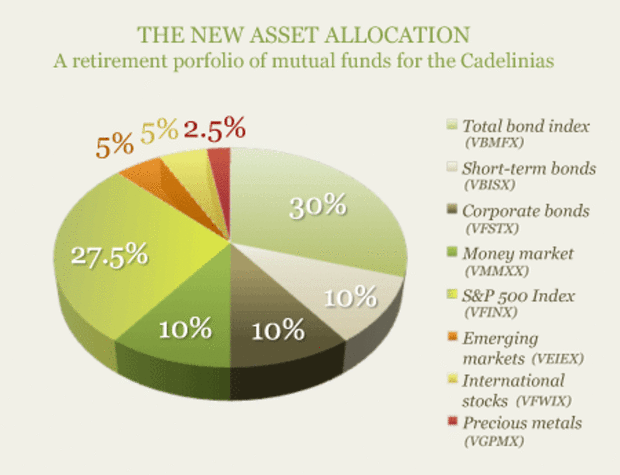Beef Up Retirement Savings
This was supposed to be the year that Sam and Myrna Cadelinia got serious about saving for retirement. When their third and last child graduated from college this spring, they planned to double their annual savings to $60,000. Funny how a global economic meltdown can mess up a good plan.
When San Francisco real estate plummeted, Sam’s annual take from the agency dropped to $61,000 from $288,000. There went the plan to set aside all that retirement money. Myrna’s $25,000-a-year job as a teacher’s aide, which comes with all-important health insurance, is now a financial necessity — although she is quick to say, “I love my work and will stay as long as I am wanted.” To pay a 2006 tax bill and for four time-shares (“I know, I know. It was the worst time to buy,” says Sam), the couple withdrew $80,000 from their $135,000 fixed-rate annuity. They’d increased their savings by setting aside $30,000 a year for the previous decade.
To add to their troubles, the stock market collapse cut Sam’s Keogh retirement portfolio by 26 percent, to $420,000. At least they were somewhat insulated: About half of the Keogh is in cash. Another $33,000 is in a pair of stock mutual funds: Amana Trust Income, a large-cap value fund, which has risen 15.56 percent this year, and Janus Orion, a large-cap growth fund that has soared 44 percent this year. Because he kept so much money in cash, Sam felt free to take a flier with the rest of the money; it resides in individual stocks in rather risky sectors of the market — tech, biotech, energy, and real estate investment trusts (REITs). Since the market meltdown he has sold some financial stocks, and he checks his portfolio several times a day. He’s not sure what to do now. “I guess I should have some bonds,” he says, without sounding very certain.
The Cadelinias also have about $350,000 in a plain-vanilla bank account. Sam, who remembers all too well the real estate crash in 1994, which required him to sell practically everything he owned, says he wants to stay liquid in case of some unforeseen problem.Another major asset is Sam’s numismatic collection, which consists mostly of antique U.S. currency, and is worth about $1.1 million. Sam says he wants to keep his collection intact as a legacy for his children.
MoneyWatch.com editor-at-large Jill Schlesinger, a certified financial planner, says that with only $550,000 in liquid assets, “the Cadelinias are woefully underfunded” for retirement. Assuming they work to age 70 and that the account grows by 4 percent a year, it would be worth approximately $800,000. Withdrawing 4.5 percent of their capital each year would generate $36,000 — not enough, even with Social Security, to maintain anything like their current standard of living. “The numismatic collection may eventually be a profitable asset,” she adds. “But it won’t pay for groceries.”
Schlesinger’s advice:
Gradually Sell the Collection
“Preserving the numismatic collection as a legacy for your children is a nice idea, but in the Cadelinias’ case, a little crazy,” says Schlesinger. They are in no position to do that because their own retirement funds are so small relative to their current spending. She recommends that the Cadelinias sell a fixed portion of the collection annually, either as they approach retirement or during retirement.
Stick to Index Funds
Sam should sell his REITs, tech and energy stocks, says Schlesinger. They are much too volatile. And, while the two mutual funds he owns are doing all right, Schlesinger believes the Cadelinias will be better off in no-load stock and bond index funds, which have very low expense ratios and provide broad diversification.
Develop a Plan for Your Keogh
Schlesinger suggests that if Sam is uncertain about how to invest, he should rethink his default position, which has been to manage the money on his own. “I think Sam and Myrna could benefit from the advice of a fee-based financial planner,” she says. If they want to go it alone, however, Schlesinger’s recommended asset allocation is 40 percent in stock and other risky assets and 60 percent in corporate bonds and cash, which are less volatile. The two biggest assets they own, real estate and the numismatic collection, are illiquid. Schlesinger’s recommended portfolio is below.

Sam’s Response
“I couldn’t agree with Jill more. I have been too optimistic and naive about our retirement portfolio. When the real estate market was booming, I believed I would be able to aggressively fund my account so that I would have enough money. Unfortunately, the market crashed. So I will take all the recommendations to heart. As for my numismatic collection, I will wait until I’m a little older and no longer have the passion for collecting before I consider liquidating it.”
More on MoneyWatch:
- Your 50s: Saving Money, Reviving Your Business
- Create a Budget, Build a Nest Egg
- Rebuilding a Small Business
Disclaimer: The copyright of this article belongs to the original author. Reposting this article is solely for the purpose of information dissemination and does not constitute any investment advice. If there is any infringement, please contact us immediately. We will make corrections or deletions as necessary. Thank you.